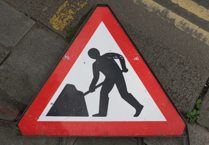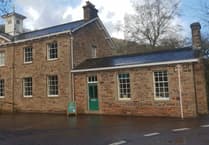PLANS to increase the height to 81 feet of a telecoms mast near Wheddon Cross are being considered by Exmoor National Pak Authority.
Airwave Solutions Ltd has submitted an application to the park authority to make its existing lattice mast 13 feet taller and also to add three 51.5-feet high antennae and new base units.
The mast, near Luckyard Farm, will form part of the Government’s shared rural network (SRN), which is being upgraded to provide better mobile signal coverage.
The height increase is less than originally proposed after Airwave took into account comments from councillors in Exton and Dulverton during consultations and concern from park planners about the proposed height above ground level.
Exton parish clerk Jennifer Yates said: “It was recognised that the site benefits the community as it provides improved mobile phone signal for local people, which is so vital in isolated rural areas for safety reasons and this is a valued service.”
Airwave planning consultant John Bird, of Galloway Estates, said design amendments had also been made so far as was possible to reflect the consultation exercise and advice received.
Mr Bird said the proposed redevelopment would meet the new network’s technical requirements.
He said SRN was announced in 2020 as a collaboration between mobile network operators and the Government for a sustainable approach to the challenge of delivering rural mobile coverage.
Mr Bird said idea was to ‘future proof’ the Luckyard Farm site for SRN apparatus, in this instance in the form of developing a four-legged tower.
The mast could then be more easily extended and deployed to provide the public and local community with access to 4G coverage once the additional antennae were deployed on the tower.
Mr Bird said: “This being without the need to duplicate infrastructure developments elsewhere, thus minimising the impact more generally in the Exmoor National Park region.”
Forty SRN masts across the country had been upgraded by the end of February this year to enable people to connect to reliable 4G coverage from all four mobile network operators, EE, Three, VMO2, and Vodaphone.
The Government said it was ‘closing the digital divide between urban and rural communities and boosting economic growth’.
A spokesperson said: “While 4G geographic coverage has now reached 95 per cent of the UK landmass thanks to the SRN, there are still rural parts of the UK where there is either limited or no mobile coverage, and we will continue to work with the industry to deliver new coverage to these communities, enabling them to thrive.
“To preserve the landscape, this part of the programme involves extending pre-existing masts, so that they are shared by all operators, rather than building new ones to avoid adverse impacts on the environment or scenery.
“This new 4G coverage will also reduce the risk of people requiring emergency assistance.
“Where people do find themselves at risk, the masts will give first responders immediate access to life-saving data, images and information, making it quicker and easier for them to rescue anybody in danger.”





Comments
This article has no comments yet. Be the first to leave a comment.